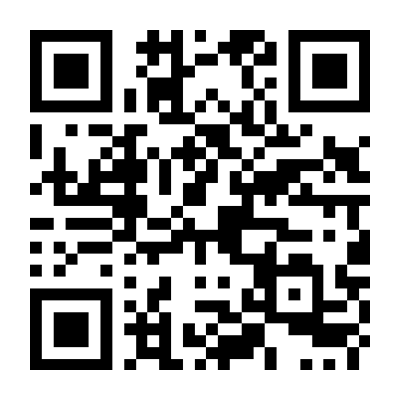多选题
2分
“The ancient Hawaiians were astronomers,” wrote Queen Liliuokalani, Hawaii’s last reigning monarch, ...
“The ancient Hawaiians were astronomers,” wrote Queen Liliuokalani, Hawaii’s last reigning monarch, in 1897. Star watchers were among the most esteemed members of Hawaiian society. Sadly, all is not well with astronomy in Hawaii today. Protests have erupted over construction of the Thirty Meter Telescope(TMT), a giant observatory that promises to revolutionize humanity’s view of the cosmos.
At issue is the TMT’s planned location on Mauna Kea, a dormant volcano worshiped by some Hawaiians as the piko, that connects the Hawaiian Islands to the heavens. But Mauna Kea is also home to some of the world’s most powerful telescopes. Rested in the Pacific Ocean, Mauna Kea’s peak rises above the bulk of our planet’s dense atmosphere, where conditions allow telescopes to obtain images of unsurpassed clarity.
Opposition to telescopes on Mauna Kea is nothing new. A small but vocal group of Hawaiians and environmentalists have long viewed their presence as disrespect for sacred land and a painful reminder of the occupation of what was once a sovereign nation.
Some blame for the current controversy belongs to astronomers. In their eagerness to build bigger telescopes, they forgot that science is not the only way of understanding the world. They did not always prioritize the protection of Mauna Kea’s fragile ecosystems or its holiness to the island’s inhabitants. Hawaiian culture is not a relic of the past; it is a living culture undergoing a renaissance today.
Yet science has a cultural history, too, with roots going back to the dawn of civilization. The same curiosity to find what lies beyond the horizon that first brought early Polynesians to Hawaii’s shores inspires astronomers today to explore the heavens. Calls to disassemble all telescopes on Mauna Kea or to ban future development there ignore the reality that astronomy and Hawaiian culture both seek to answer big questions about who we are, where we come from and where we are going. Perhaps that is why we explore the starry skies, as if answering a primal calling to know ourselves and our true ancestral homes.
The astronomy community is making compromises to change its use of Mauna Kea. The TMT site was chosen to minimize the telescope’s visibility around the island and to avoid archaeological and environmental impact. To limit the number of telescopes on Mauna Kea, old ones will be removed at the end of their lifetimes and their sites returned to a natural state. There is no reason why everyone cannot be welcomed on Mauna Kea to embrace their cultural heritage and to study the stars.
The construction of the TMT is opposed by some locals partly because
At issue is the TMT’s planned location on Mauna Kea, a dormant volcano worshiped by some Hawaiians as the piko, that connects the Hawaiian Islands to the heavens. But Mauna Kea is also home to some of the world’s most powerful telescopes. Rested in the Pacific Ocean, Mauna Kea’s peak rises above the bulk of our planet’s dense atmosphere, where conditions allow telescopes to obtain images of unsurpassed clarity.
Opposition to telescopes on Mauna Kea is nothing new. A small but vocal group of Hawaiians and environmentalists have long viewed their presence as disrespect for sacred land and a painful reminder of the occupation of what was once a sovereign nation.
Some blame for the current controversy belongs to astronomers. In their eagerness to build bigger telescopes, they forgot that science is not the only way of understanding the world. They did not always prioritize the protection of Mauna Kea’s fragile ecosystems or its holiness to the island’s inhabitants. Hawaiian culture is not a relic of the past; it is a living culture undergoing a renaissance today.
Yet science has a cultural history, too, with roots going back to the dawn of civilization. The same curiosity to find what lies beyond the horizon that first brought early Polynesians to Hawaii’s shores inspires astronomers today to explore the heavens. Calls to disassemble all telescopes on Mauna Kea or to ban future development there ignore the reality that astronomy and Hawaiian culture both seek to answer big questions about who we are, where we come from and where we are going. Perhaps that is why we explore the starry skies, as if answering a primal calling to know ourselves and our true ancestral homes.
The astronomy community is making compromises to change its use of Mauna Kea. The TMT site was chosen to minimize the telescope’s visibility around the island and to avoid archaeological and environmental impact. To limit the number of telescopes on Mauna Kea, old ones will be removed at the end of their lifetimes and their sites returned to a natural state. There is no reason why everyone cannot be welcomed on Mauna Kea to embrace their cultural heritage and to study the stars.
The construction of the TMT is opposed by some locals partly because
参考答案: B
参考解析: 事实细节题。根据第三段A small but vocal group of Hawaiians and environmentalists …and a painful reminder of the occupation of what was once a sovereign nation可知,当地人把他们的存在看作是对于这片神圣土地的一种不尊重,同时提示他们这里曾经被一个主权国家占领,故B选项为正确答案。文章第四段最后一句提到夏威夷文化并不是过去的遗迹,它是正在复兴的有活力的文化,故排除C项。其他两项文中未提及,故排除。

 百度扫一扫练题
百度扫一扫练题
 关注千题库公众号
关注千题库公众号








